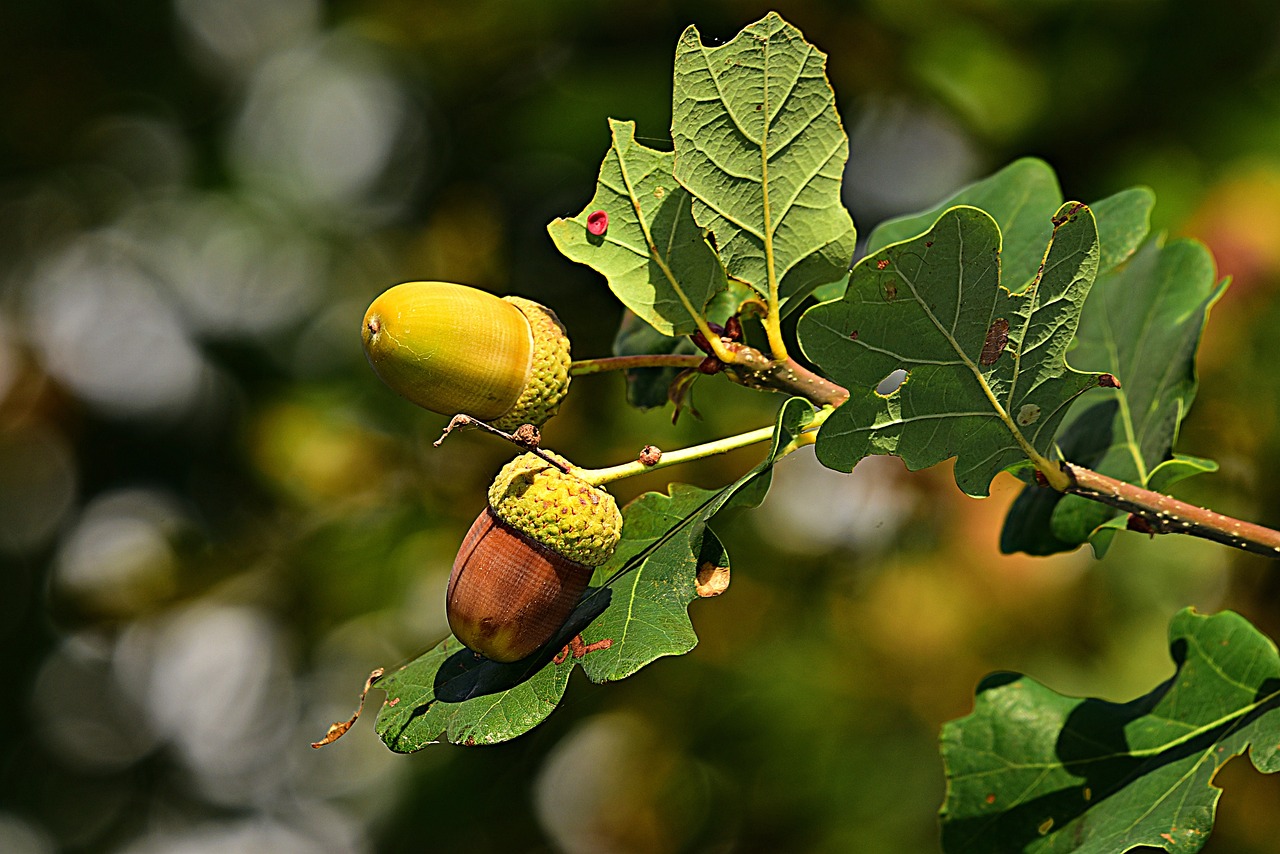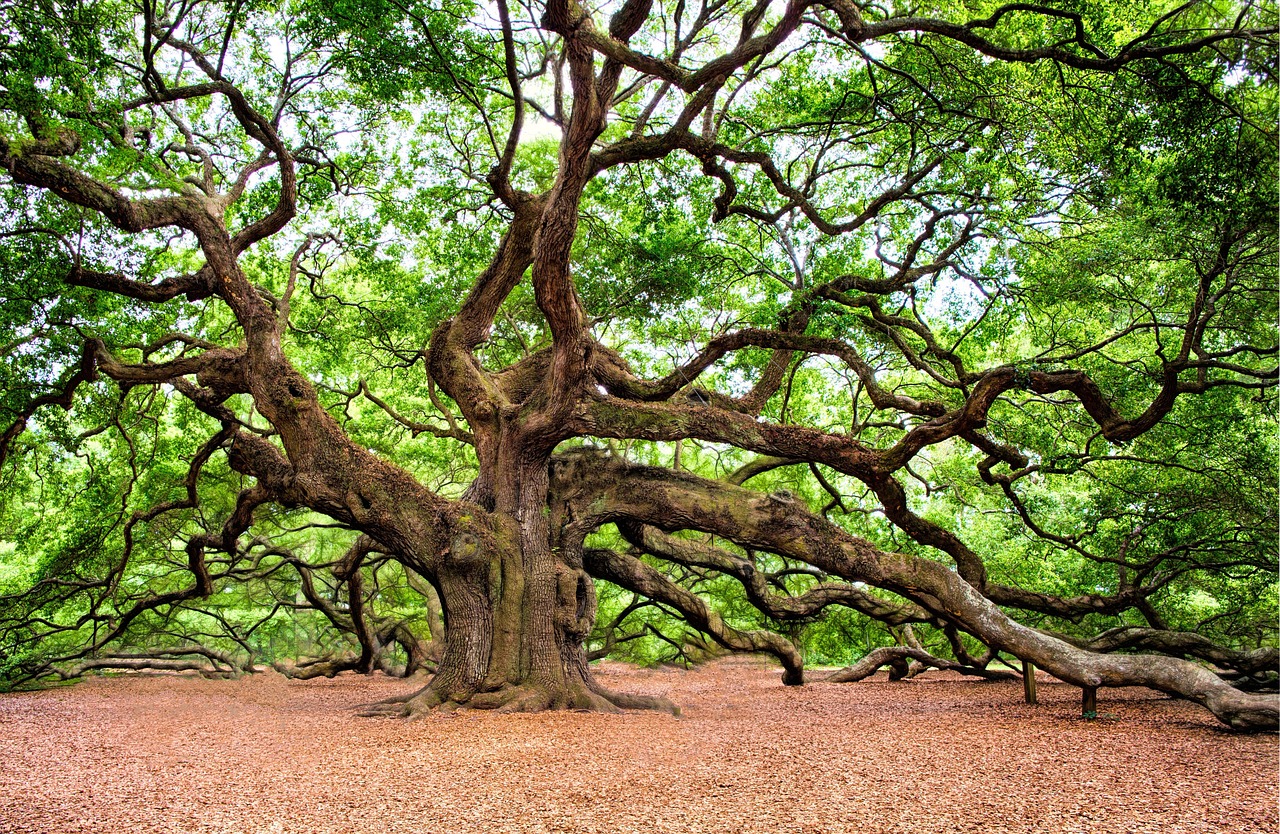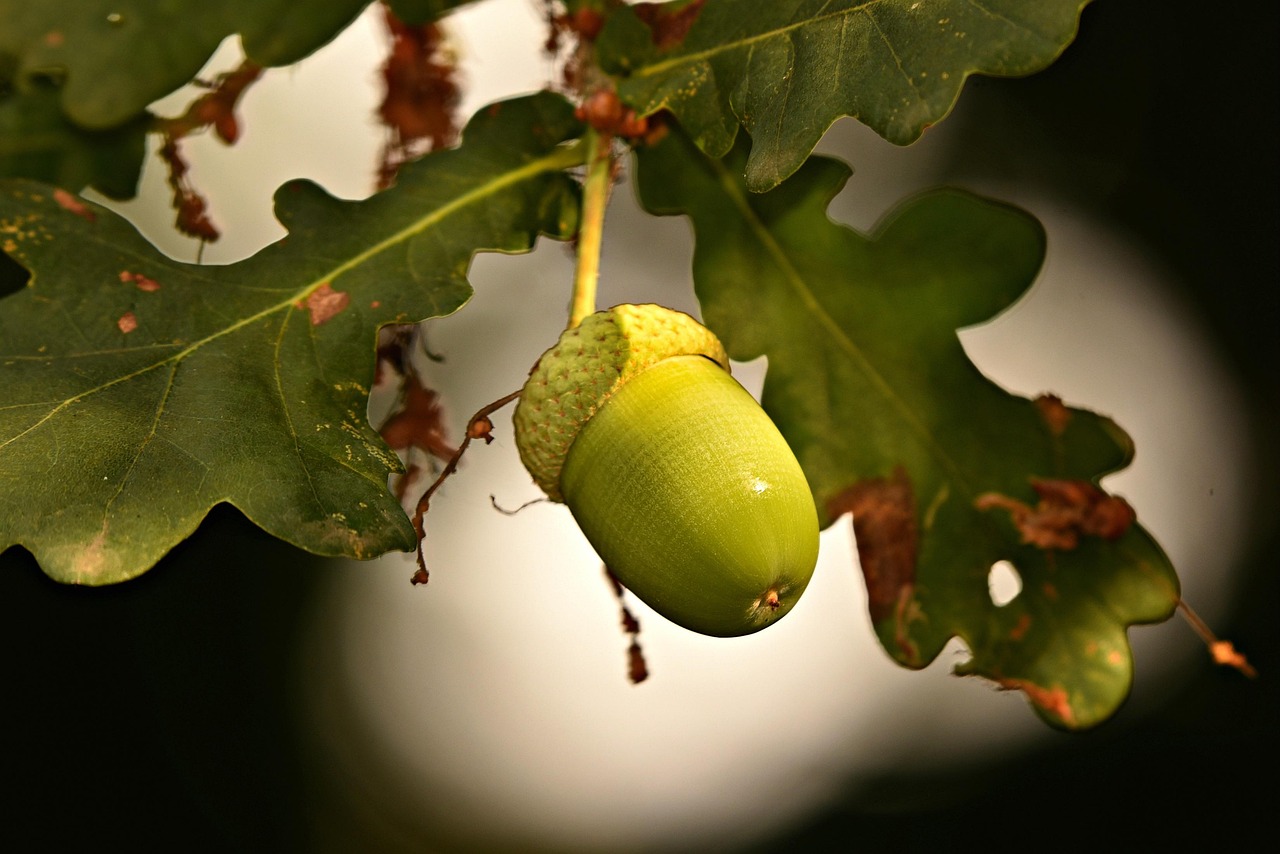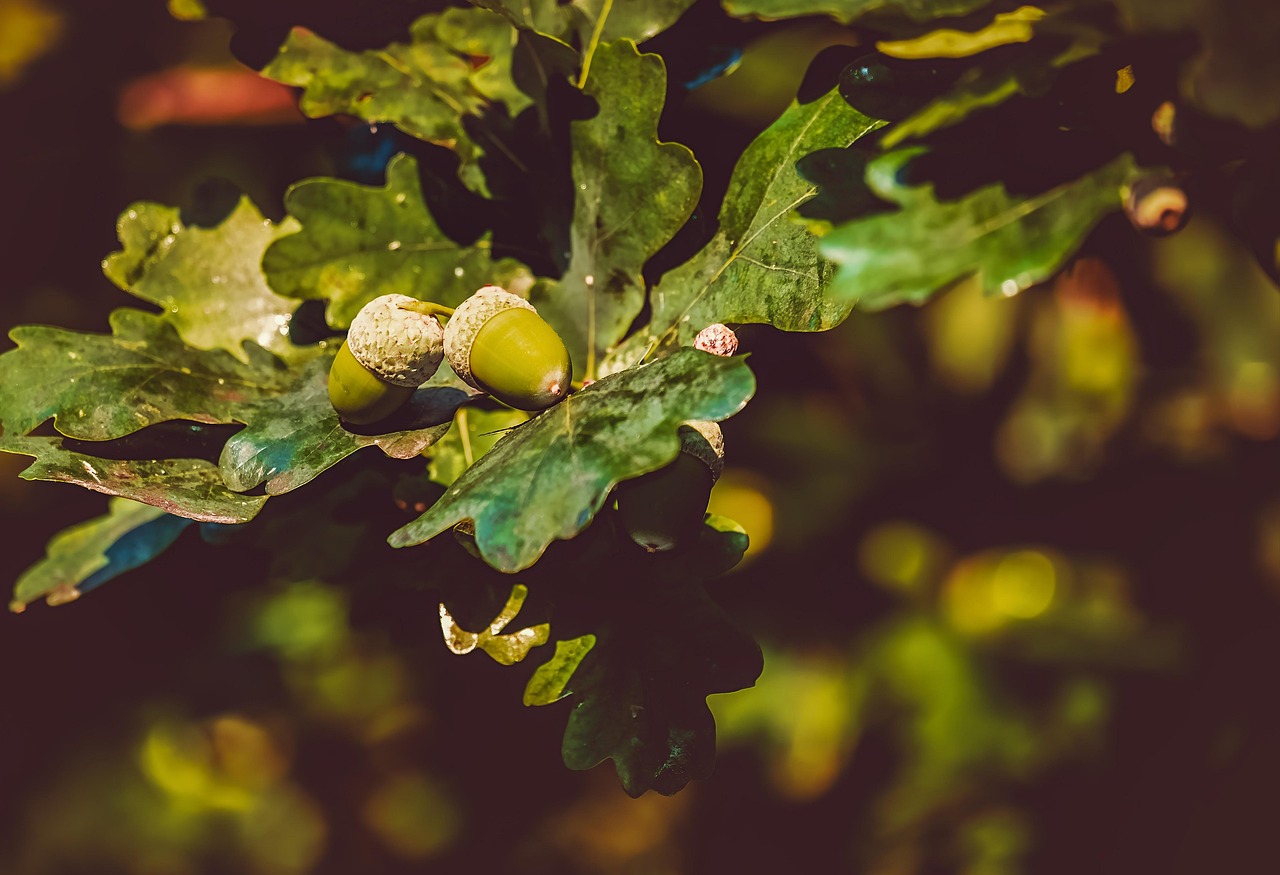Oak trees typically bloom between March and June, depending on the species and climate. The blooming season is influenced by temperature, geographic location, and environmental conditions. It is essential to understand this timing for effective gardening, landscaping, and ecological studies.
Understanding Oak Tree Blooms

Oak trees are renowned for their majestic stature and vibrant foliage. They belong to the genus Quercus and are found in various regions across the globe. The blooming season of oak trees is a significant aspect of their life cycle, marking the time when they produce flowers that will eventually develop into acorns. Understanding the blooming season helps in forest management, wildlife conservation, and gardening practices.
During the blooming season, oak trees produce both male and female flowers. The male flowers are typically found in long catkins, while the female flowers are smaller and can be seen clustered near the ends of branches. The timing of these blooms varies significantly based on several factors.
Factors Influencing Blooming Timing
The timing of oak tree blooming is influenced by various factors, including:
- Species Variation: Different oak species bloom at different times. For instance, the Northern Red Oak blooms earlier than the White Oak.
- Geographic Location: Oak trees in warmer climates tend to bloom earlier than those in cooler regions.
- Temperature: Warmer spring temperatures can trigger earlier blooming. A late frost can also affect the timing and success of the bloom.
- Soil Conditions: The health of the soil can influence blooming. Nutrient-rich soils promote healthy growth and timely blooming.
These factors not only affect when an oak tree will bloom but also its overall health and productivity. Understanding these influences allows for better planning in landscaping and forestry.
Blooming Timeline of Common Oak Species
The following table illustrates the typical blooming periods for several common oak species:
| Oak Species | Blooming Period |
|---|---|
| White Oak | April to June |
| Red Oak | March to May |
| Pin Oak | April to May |
| Bur Oak | May to June |
This table provides a quick reference for identifying when to expect blooms from various oak species. Gardeners and nature enthusiasts can utilize this information to enhance their gardening efforts or plan visits to natural areas during blooming periods.
The Importance of Oak Tree Blooms
The blooming of oak trees is not just a visual spectacle; it plays a crucial role in the ecosystem. Oak flowers are a vital food source for various pollinators, such as bees and butterflies. These insects contribute to the pollination process, which is essential for the production of acorns. Acorns serve as food for many wildlife species, including squirrels, deer, and birds.
Furthermore, oak trees provide numerous environmental benefits. They improve air quality, support biodiversity, and offer shade and shelter. Recognizing the significance of their blooming season allows communities to appreciate these remarkable trees more deeply.
Ecological Impact of Oak Tree Blooming
The blooming season of oak trees is a pivotal event in their life cycle, influencing not only the trees themselves but also the surrounding ecosystem. The flowers serve crucial roles in various ecological processes, providing food and habitat for numerous species. Understanding these ecological impacts can foster greater appreciation for oak trees and promote conservation efforts.
Role of Oak Flowers in Pollination
Oak flowers are primarily wind-pollinated, which differentiates them from many other flowering plants that rely on insects for pollination. The male catkins release pollen into the air, while the female flowers are receptive to this pollen. This method of pollination is efficient and allows oak trees to reproduce successfully in diverse environments.
The timing of blooming is essential for effective pollination. If the male and female flowers do not bloom simultaneously, it can lead to reduced acorn production. This has cascading effects on wildlife that depend on acorns as a food source.
Support for Wildlife
During the blooming season, oak trees become a hub of activity for various animals and insects. The flowers attract a range of pollinators, including:
- Bees: Various species of bees visit oak flowers for nectar, making them critical players in pollination.
- Butterflies: These beautiful insects are attracted to the blooms and contribute to the pollination process.
- Birds: Some bird species feed on the flowers and insects that are drawn to them.
The presence of oak blooms enhances biodiversity by creating a thriving environment for other organisms. This interconnectedness is vital for maintaining healthy ecosystems.
Influence of Climate on Blooming Patterns
Climate change is increasingly affecting the blooming patterns of oak trees. Changes in temperature and precipitation can shift the timing of blooming, which has significant implications for ecological interactions.
Temperature Shifts
Warmer spring temperatures can lead to earlier blooming. A study conducted in several regions indicated that oak trees are blooming one to two weeks earlier than they did a few decades ago. This shift can disrupt the synchronicity between oak trees and their pollinators.
For instance, if oak trees bloom earlier than usual, pollinators that rely on these flowers may not emerge in time to facilitate effective pollination. This misalignment can influence acorn production, subsequently affecting wildlife populations that depend on acorns for sustenance.
Impact of Precipitation Changes
Changes in precipitation patterns can also impact oak tree health and blooming. Increased rainfall can lead to improved soil moisture, promoting healthy growth. However, excessive rainfall or drought conditions can stress the trees, potentially delaying or reducing blooming.
Observing Oak Tree Blooms
Observing the blooming season of oak trees can be an educational and rewarding experience. Here are some tips for observing oak blossoms effectively:
- Timing: Visit your local oak trees during their expected blooming period. This varies by species and geographic location.
- Insect Activity: Pay attention to the types of insects visiting the flowers. This can provide insights into pollinator populations in your area.
- Taking Notes: Document your observations, including dates, weather conditions, and any wildlife interactions you witness.
Engaging with nature in this manner can deepen one’s understanding of the ecological roles played by these magnificent trees.
Cultural Significance of Oak Trees
Apart from their ecological importance, oak trees hold significant cultural value across various societies. They often symbolize strength, endurance, and stability. Many cultures have incorporated oak trees into their folklore and traditions, further emphasizing their importance beyond just environmental factors.
In ancient times, the oak was revered by various civilizations, including the Greeks and Romans, who associated it with gods and mythology. Today, oak trees continue to be celebrated through festivals and as national symbols in several countries.
Oak Trees in Landscaping and Gardening

Oak trees are not only significant in ecological and cultural contexts; they also play a vital role in landscaping and gardening. Their majestic presence, expansive canopy, and seasonal beauty make them a popular choice for both residential and public spaces.

Benefits of Planting Oak Trees
Planting oak trees can provide numerous benefits, including:
- Shade: Oak trees have a broad canopy that offers substantial shade. This cooling effect can help reduce energy costs in nearby buildings during hot seasons.
- Soil Improvement: The deep root systems of oak trees can improve soil structure and health, making it more suitable for other plants.
- Wildlife Habitat: Oaks support a diverse ecosystem, providing habitat and food for various animals and birds.
- Aesthetic Appeal: The beauty of oak trees, especially during the blooming season, enhances the visual appeal of landscapes.
These features make oak trees a valuable addition to gardens and parks. However, proper planning is essential when incorporating them into landscaping designs.
Considerations for Planting Oak Trees
When considering planting oak trees, there are several factors to take into account:
- Space Requirements: Oak trees can grow quite large, both in height and spread. Ensure there is adequate space for the tree to grow without interfering with buildings or power lines.
- Soil Type: Oaks prefer well-drained soil but can adapt to various soil types. Conduct a soil test to ensure the area is suitable for oak growth.
- Sunlight Needs: Oak trees thrive in full sun. Choose a location that receives ample sunlight throughout the day.
- Watering Needs: Newly planted oaks require consistent watering until established. Monitor soil moisture, especially during dry spells.
By considering these factors, gardeners can successfully integrate oak trees into their landscapes, enjoying their numerous benefits for years to come.
Care and Maintenance of Oak Trees
Caring for oak trees is essential to ensure their health and longevity. Proper maintenance practices can significantly impact their growth and blooming potential.
Pruning Techniques
Pruning is an important aspect of oak tree care. Regular pruning helps maintain tree health and shape, while also promoting better air circulation. Here are some key points regarding pruning:
- Timing: The best time to prune oak trees is during late winter or early spring before the new growth begins. Avoid pruning during the blooming season to prevent disrupting the flowering process.
- Removing Dead or Diseased Branches: Regularly inspect the tree for any dead or diseased branches and remove them promptly to prevent further damage.
- Shaping: Prune to shape the tree and encourage a balanced canopy. Avoid removing more than 25% of the tree’s foliage at once.
Pest and Disease Management
Like all trees, oak trees can be susceptible to pests and diseases. Some common issues include:
- Aphids: These small insects can weaken the tree by sucking sap. Regular monitoring can help manage their populations.
- Oak Wilt: This serious fungal disease can rapidly kill oak trees. If detected, consult with an arborist for appropriate treatment options.
- Leaf Spot Diseases: These can cause unsightly spots on leaves but are often manageable with proper care and maintenance.
Regular inspections and prompt action during pest infestations or disease outbreaks are critical in maintaining healthy oak trees.
The Future of Oak Trees
The future of oak trees faces various challenges, including climate change, urbanization, and invasive species. However, proactive measures can help ensure their survival and continued importance in our ecosystems.
Conservation Efforts
Numerous organizations and initiatives are focused on conserving oak tree habitats and promoting their benefits. Some key strategies include:
- Reforestation Projects: Planting new oak trees in deforested or degraded areas helps restore ecosystems.
- Educational Programs: Raising awareness about the ecological importance of oak trees encourages community involvement in conservation efforts.
- Sustainable Forestry Practices: Implementing sustainable logging practices helps protect existing oak forests while allowing for responsible harvesting.
By fostering a deeper understanding of oak trees and their blooming seasons, communities can contribute to their protection and appreciation for generations to come.
Future Research on Oak Trees

As we strive to understand the complexities of oak tree blooming and their ecological roles, ongoing research is crucial. Scientists and environmentalists are exploring various aspects of oak trees to enhance our knowledge and address future challenges.
Genetic Studies
Research into the genetic makeup of different oak species can provide insights into their resilience against pests, diseases, and climate change. By understanding the genetics of oak trees, conservationists can identify strong individuals for breeding programs, ensuring the survival of desirable traits.
Impact of Climate Change
Studies focusing on how climate change affects oak blooming patterns are essential. Understanding shifts in blooming times can help predict changes in pollinator behavior and wildlife interactions. Such information is vital for effective forest management and conservation strategies.
Community Engagement in Conservation
Engaging local communities in oak conservation efforts has proven beneficial. Citizen science projects allow individuals to participate in monitoring oak trees and their ecosystems. This involvement fosters a sense of stewardship and encourages sustainable practices within communities.
Supporting Oak Tree Health
To ensure the longevity and health of oak trees, individuals and communities can adopt various support practices. These methods not only enhance tree vitality but also contribute to a healthier ecosystem.
Soil Health Management
Maintaining healthy soil is crucial for oak tree growth. Practices such as:
- Composting: Adding organic matter to the soil improves its structure and nutrient content, promoting healthy root systems.
- Mulching: Applying mulch around the base of oak trees retains soil moisture and suppresses weeds, allowing for better growth conditions.
- Avoiding Soil Compaction: Preventing heavy foot traffic around the tree base protects the roots from damage.
By implementing these practices, communities can support the health of oak trees and ensure they continue to thrive.
Encouraging Biodiversity Around Oak Trees
Oak trees are integral to fostering biodiversity in their surroundings. Planting companion species that thrive alongside oaks enhances habitat complexity and supports a wider range of wildlife. Consider including:
- Natives Plants: Incorporating native flora alongside oak trees promotes local wildlife, including pollinators and birds.
- Diverse Understory Species: Creating a diverse understory layer can improve habitat for various insects and small mammals.
- Buffer Zones: Establishing buffer zones around oak trees minimizes human impact and preserves natural habitats.
This approach not only benefits oak trees but also contributes to overall ecosystem health.
Final Thoughts
The blooming season of oak trees is a fascinating interplay of ecological, cultural, and practical significance. Understanding this timing allows us to appreciate the vital roles these trees play in our environment. From supporting wildlife to enhancing landscapes, oak trees are essential components of our ecosystems.
By recognizing the challenges they face, including climate change and habitat loss, we can take proactive steps towards their conservation. Engaging communities in stewardship and education promotes a collective effort to protect these magnificent trees for future generations.
The appreciation of oak trees extends beyond their beauty; it encompasses their ecological importance and cultural heritage. As we continue to learn about their blooming periods and overall health, we contribute to a greater understanding of nature’s intricate web. Together, we can ensure that the majestic oak trees continue to thrive, enriching our landscapes and ecosystems for years to come.
